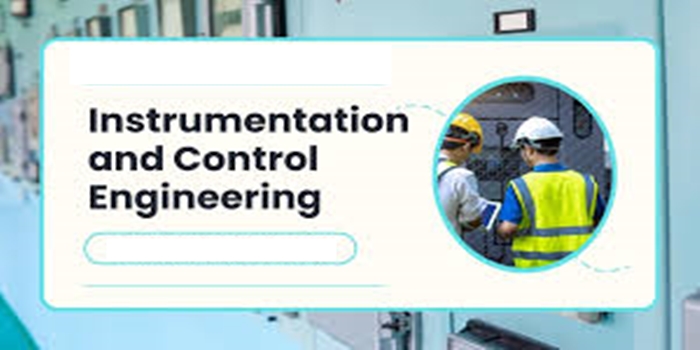In this article, we explained instrumentation and control service, the scope, installation & commissioning services, the benefits, project management & documentation.
Definition
Instrumentation and control (I&C) services involve the design, installation, and maintenance of systems that measure and control variables like temperature, pressure, and flow in industrial processes. These services include a wide range of activities such as instrument calibration, automation design, system commissioning, and the creation of control panels and safety systems like SCADA and DCS. The overall goal is to ensure safe, efficient, and reliable plant operations through accurate and automated control.
The Scope of Instrumentation & Control Services:
Design and engineering: Developing control strategies and system architectures, performing basic and detailed engineering, and designing safety instrumented systems to protect personnel and equipment.
Instrumentation and control systems: Selecting, installing, and maintaining instruments like sensors that measure temperature, pressure, and level, as well as the control systems that use this data.
Process optimization: Implementing strategies to improve operational efficiency, reduce energy consumption, and minimize waste within industrial processes.
Calibration: Calibrating instruments to guarantee accurate and reliable measurements, a crucial aspect of maintaining system integrity.
Safety and compliance: Designing and implementing safety systems to ensure compliance with contemporary safety standards and protect assets.
Commissioning, operations, and maintenance: Performing testing, start-up procedures, and ongoing maintenance for electrical, mechanical, and control systems to ensure they operate correctly and reliably.
Procurement and construction: Providing project management and execution for the electromechanical and control aspects of projects, often as part of a larger engineering, procurement, construction, and management (EPCM) solution.
Upgrades and modernization: Upgrading aging or critical systems to improve performance, efficiency, and safety, while minimizing operational downtime.
Installation & Commissioning Services:
Physical setup: Assembling and deploying equipment, infrastructure, and components according to engineering designs and standards.
Pre-configuration: Preparing hardware by setting up network configurations, assigning IP addresses, and ensuring all settings align with the project’s design.
Site-specific setup: Tailoring the installation to the specific environmental conditions and technical requirements of the project site.
Commissioning
System integration: Verifying that all parts and subsystems, such as control systems, sensors, and PLCs, communicate and function together as a single, cohesive system.
Testing and validation: Conducting various tests, including Factory Acceptance Testing (FAT) and Site Acceptance Testing (SAT), to validate performance and functionality before full operation.
Calibration: Performing initial calibrations of instruments and equipment to ensure they are set to precise and correct settings.
Optimization: Fine-tuning the system to ensure it operates at peak efficiency and reliability.
Reduced delays: Minimizing downtime by ensuring the system is ready for operation immediately after handover.
Increased reliability: Improving the operational performance and service life of the equipment.
Enhanced safety: Verifying that all safety controls are in place and functional.
Knowledge transfer: Providing hands-on training for the owner’s staff to support ongoing operations and maintenance.
Benefits of Professional Instrumentation & Control Services:
Increased efficiency: Automate processes to improve productivity, optimize control strategies, and reduce variability.
Cost savings: Reduce operational costs and minimize the potential for costly errors.
Improved quality: Fine-tune processes and consistently monitor variables to maintain and improve product quality.
Reduced downtime: Quickly troubleshoot issues before they escalate and perform preventive maintenance to minimize disruptions.
Better decision-making: Collect and analyze data to provide valuable insights for faster and smarter operational decisions.
Safety and compliance benefits
Enhanced safety: Continuously monitor critical process parameters and alert operators to potential dangers, reducing the risk of accidents and equipment damage.
Regulatory compliance: Ensure compliance with industry standards and regulations through proper system design and maintenance.
System and maintenance benefits
Reliable systems: Improve system reliability and performance through regular monitoring and professional maintenance.
Proactive maintenance: Pinpoint potential issues and act proactively rather than reactively.
Effective troubleshooting: Get help with diagnosing and resolving complex system issues, reducing the time needed to fix problems.
Optimized design: Leverage expert knowledge for designing and developing new, more efficient control systems.
Project Management & Documentation:
A central repository: It’s a collection of all documents, data, and information from a project’s proposal and planning through its execution, monitoring, and closure.
A communication tool: Documentation ensures all team members and stakeholders are aligned and have access to the same information, reducing miscommunication.
A reference guide: It provides a clear record of the project’s goals, requirements, plans, and decisions, which is invaluable for the current project and future initiatives.
Improves organization and efficiency: By having a single source of truth, project managers can keep track of all aspects of the project and reduce delays.
Ensures accountability: It clarifies responsibilities and expectations for each team member.
Tracks progress: It provides the necessary information to monitor the project’s development and ensure it stays on track and within budget.
Facilitates decision-making: It offers a historical record of decisions made, which is crucial for navigating challenges and making informed choices.
Aids in future projects: A “lessons learned” report or final project report provides valuable insights for future project planning.
Project Charter: Outlines the project’s purpose, goals, and stakeholders.
Project Management Plan: Provides the basis for all further project work.
Work Breakdown Structure: Helps define the project’s scope.
Risk Register: Identifies potential risks.
Status Reports: Keeps stakeholders informed of progress.
Lessons Learned Report: Documents what worked well and what didn’t.
Project Closure Document: Formally closes the project.
Conclusion
Instrumentation & Control (I&C) services involve the design, development, installation, and maintenance of automated systems used to measure, monitor, and regulate physical variables in industrial processes, such as temperature, pressure, flow, and level. These services are critical for ensuring safety, efficiency, product quality, and reliability across a wide range of industries.


